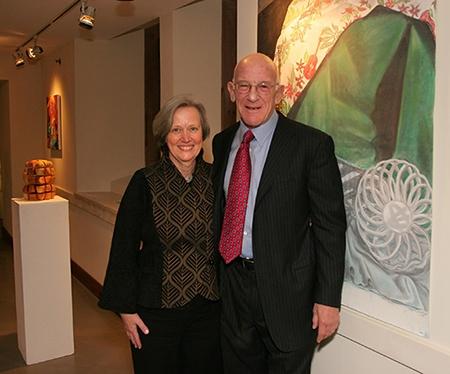Lewis’s Gift Will Transform Princeton’s Creative and Performing Arts Program

After Shirley M. Tilghman became president of Princeton, she discovered that one of the joys of the job was sampling the array of artistic endeavors on campus. “I encountered performances and creations of stunning quality, whether it was the University orchestra or the Katzenjammers, the certificate performances in Theater and Dance or the Princeton University Players, the collections at the Art Museum or the student work in Visual Arts at 185 Nassau,” Tilghman recalls. The more she saw and heard—and the more she consulted with students, faculty, and arts experts—the more she became convinced that these kinds of activities were essential to the life of the campus and should be strengthened.
Now, thanks to Trustee Peter B. Lewis ’55, her vision will be realized. In January, the University announced that Lewis will give Princeton $101 million to dramatically enhance the arts on campus. The funds will be used to carry out a wide-ranging initiative that resulted from an intensive, yearlong study by a task force chaired by Stanley T. Allen *88, dean of the School of Architecture.
The goal is ambitious: to transform Princeton into a leader in the teaching, study, and practice of the arts in higher education. “We aspire to create a distinctive educational model that seamlessly integrates the creative and performing arts into an undergraduate liberal arts program that is second to none,” Tilghman said. “Peter’s confidence in Princeton will make this goal attainable.”
That confidence is reflected in the more than $220 million that Lewis has given to the University in recent years, making him the most generous donor in Princeton’s modern history. “Princeton consistently strives to be excellent, to do even better than it did before,” Lewis said. “It also offers donors comfort that their money will be managed well and responsibly and used for the purpose intended.” His gifts to Princeton include the Lewis-Sigler Institute for Integrative Genomics, which was dedicated in 2003, and the Peter B. Lewis Science Library, designed by the acclaimed architect Frank Gehry and now under construction.
Lewis is chairman of the board of The Progressive Corporation, one of the nation’s leading auto insurers, headquartered near Cleveland, Ohio. His initial encounter with the arts at Princeton was less than propitious. “I took two art courses as an undergraduate and got the worst grades I’d ever received,” he said. “I just didn’t get what it was all about.” That changed some 20 years later, when Lewis decided that his company’s new office building needed artwork. “I went to New York, started meeting with art dealers, printmakers, artists, and got hooked by the people and the process as much as by the art,” said Lewis, who went on to become a leading arts patron.
The initiative will bring new vitality to the full spectrum of creative and performing arts on campus. The plan, which will require support from other donors, aims to greatly enhance Princeton’s existing academic and extracurricular programs, and the work of the Art Museum, in a way that promotes scholarship, attracts students interested in the arts, and allows the arts to flourish on campus.
Key elements of the plan are the construction of a new arts complex, the creation of a Society of Fellows in the Arts that will bring emerging artists to campus to teach and pursue their work, and the establishment of a new University Center for the Creative and Performing Arts, an organizational home that will unite and support the arts at Princeton. The center will be headed by renowned poet and longtime faculty member Paul B. Muldoon.
Tilghman outlined the arts initiative in a report to the Board of Trustees in January. The report noted that student interest in certificate programs in creative writing, theater and dance, musical performance, and visual arts is far greater than the University can currently accommodate—and that outstanding offerings are critical to recruit the most academically gifted students, many of whom have a deep interest in the arts. Perhaps most important, Tilghman pointed out, the arts help develop habits of mind that are invaluable, regardless of one’s path in life.
Now Tilghman, whose father loved to play jazz piano, and who herself studied classical piano, can look forward to finding room in her packed schedule for even more campus art exhibits, concerts, and plays. “Although blessed with little talent for the arts myself, I have always believed that the arts feed the soul,” she said. As the arts plan gets underway, the University community will be better nourished than ever before.


